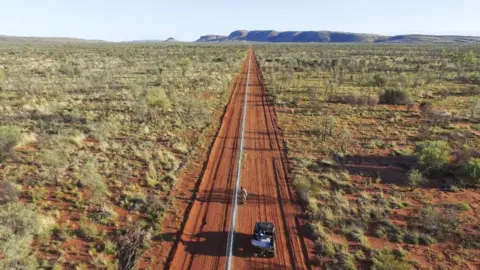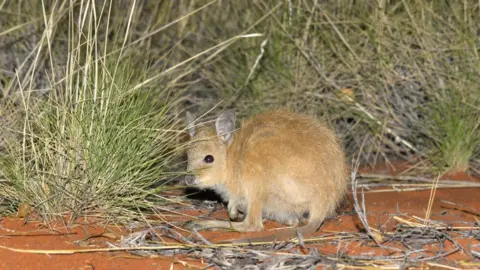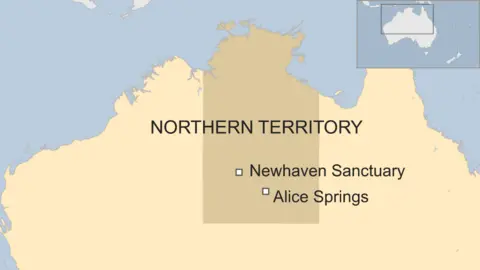Australian cat-proof fence protects endangered species
 WAYNE LAWLER/AUSTRALIAN WILDLIFE CONSERVANCY
WAYNE LAWLER/AUSTRALIAN WILDLIFE CONSERVANCYFeral cats are a huge threat to native animals in Australia but one region wants to stop their destruction by physically shutting them out.
The world's longest cat-proof fence has been built in central Australia to help bring endangered species back to the area.
The 44km (27 mile) electric fence borders a wildlife sanctuary, and will keep out feral cats, foxes and rabbits.
It is part of broader "rewilding" efforts to boost native populations.
Animals like the mala, a type of small wallaby, will be reintroduced to a 9,400 hectare cat-free zone at Newhaven Wildlife Sanctuary, 350km north-west of Alice Springs.
The Australian Wildlife Conservancy (AWC), which manages the refuge, says the fence will help protect animals within the zone.
"There are about 50 or 60 cats in that area alone, and they would eat over 70,000 native animals a year," chief executive Atticus Fleming told the BBC.
"This fence is one of the most important conservation infrastructure pieces in Australia."
 WAYNE LAWLER/AUSTRALIAN WILDLIFE CONSERVANCY
WAYNE LAWLER/AUSTRALIAN WILDLIFE CONSERVANCYMammal repopulation
The fenced-off zone now makes up the largest cat-free area mainland Australia. Feral cats are found in 99.8% of the country.
Rangers in the sanctuary aim to wipe out all predators by the end of the year.
Then from 2019, they will reintroduce up to 10 critically endangered species. These include the black-footed rock-wallaby, golden bandicoot and western quoll.
"For the first time, a vast landscape in central Australia will once again be home to a diversity and abundance of mammals similar to that which existed prior to the arrival of European settlers," the AWC said.
The efforts are part of a national "rewilding" campaign by the AWC to repopulate sanctuaries around the country with endangered animals.

The group estimates the Newhaven sanctuary will more than double the population for animals such as the mala.
It also plans to increase the size of the refuge to 100,000 hectares and is fund-raising to build the next part of the fence.
The first stage cost about A$5m (£2.8m; $3.7m), with the federal government contributing about 20% of the cost.
